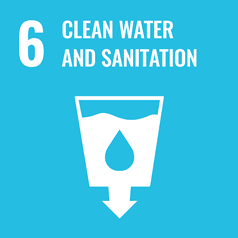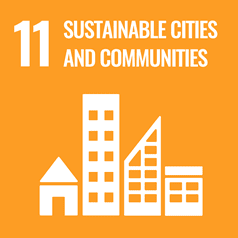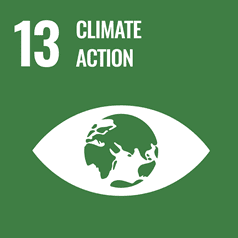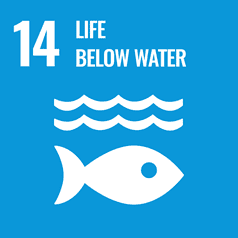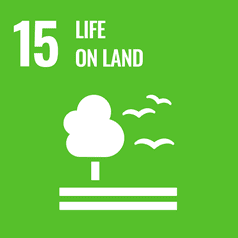Protecting coral reefs and extreme weather on earth and in space: $4.8m in ARC funding
Our environment and how we protect it will be a key focus for innovative researchers from the University of Newcastle, who were successful in the latest round of the Australian Research Council (ARC) Discovery Projects Scheme.

More than $4.8m will be allocated to 10 research projects aiming to innovate and expand our knowledge of the universe.
The researchers will tackle some key challenges – including managing the recovery of our coral reefs from bleaching events, and improving the prediction of extreme space weather events, which pose an increasing threat to our technologically-dependent society.
Discovery Projects, a flagship scheme for fundamental research and the largest scheme under the ARC National Competitive Grants Program, provides funding of between $30,000 and $500,000 each year for up to five consecutive years.
The successful University of Newcastle 2022 ARC Discovery Projects:
Associate Professor Bill Leggat; Dr Claire Spillman; Mr Damian Thomson; Associate Professor Scott Heron; Associate Professor Tracy Ainsworth
Funding: $660,607
The coral reefs of Australia contribute over $6 bn each year to the economy. However, the reefs of Australia, in addition to those worldwide, are threatened by coral bleaching driven by anthropogenic climate change. If we are to preserve the economic, social and ecosystem value of these environments, it is essential that we are able to better manage the recovery of reefs from bleaching events. This project will utilise a variety of multi-disciplinary approaches, ranging from future climate models, historical satellite data to in-field experimentation to fill fundamental knowledge gaps in our understanding of coral bleaching recovery and delivery a variety of management and stakeholder relevant outputs.
Professor Brett Neilan; Dr Susanna Wood; Dr Tristan de Rond; Dr Leanne Pearson
Funding: $630,000
Biosynthetic Hooks for an Enigmatic Marine Toxin. This project aims to characterise the genetic basis for the production of tetrodotoxin; a potent neurotoxin of ecological and biomedical significance. We hypothesise that tetrodotoxin is produced by microorganisms and transferred via the food web to fish, molluscs and other marine animals. In addition to providing unprecedented insight into the ecology and biosynthesis of this enigmatic toxin, the data generated will enable improved management of seafood safety and provide a foundation for the future development of novel neuroactive compounds.
Associate Professor Yuen Yong; Dr Van Dau; Professor Thomas Nann
Funding: $560,000
This project aims to develop a new fabrication technique for high-aspect-ratio (long and sharp) tips for atomic force microscopy. The technique is expected to overcome the current fabrication limitation, that is fabricating one tip at a time which is unsuitable for batch fabrication. The proposed technique can be scaled up to mass produce nano tips. The technique is expected to create new commercial products and intellectual property. This innovation will lead to the emergence of breakthrough technologies in nanofabrication and nanomaterials synthesis. The benefits to Australia include new job opportunities and the development of local expertise in the field.
Professor Shanyong Wang; Professor Hywel Thomas
Funding: $532,000
A novel whole-process analysis method for fractured rock slopes. The project aims to develop a discontinuous deformation and displacement analysis method to study the jointed rock slope instability. The proposed method verified by experimental tests will be inherit the advantages of finite element method and discontinuous deformation analysis and is able to provide an entire and unified description of rock deformation and failure. The results of this integrated study will provide a new method for engineers who wish to characterise and predict the stability of rock/tunnel slopes in Australia and worldwide. Australian society will benefit from new tools to facilitate more reliable assessment of risks associated with instability in rock slopes.
Associate Professor David Pontin; Dr Hannah Schunker; Professor Michael Wheatland; Dr Chun Ming Mark Cheung
Funding: $500,000
Ensemble modelling of space-weather drivers. This project aims to develop methods for forecasting the evolution of magnetic fields on the Sun's surface, and to use the results to drive an ensemble of numerical simulations of the evolution of the magnetic field in the overlying atmosphere. The project expects to create a new framework for forecasting the evolution of solar active regions, applying, for the first time, methods established in Numerical Weather Prediction. The expected outcomes are physics-based prediction of solar atmospheric magnetic field evolution, including explosive eruptions. The results should have significant benefit in improving prediction of extreme space weather events, which pose an increasing threat to our technologically-dependent society.
Professor Olivier Buzzi; Dr Jubert Pineda; Professor Mark Jaksa; Assistant Professor Marti Lloret-Cabot
Funding: $450,000
This project aims to advance fundamental knowledge on the complex behaviour of reactive soils in the context of resilient geotechnical infrastructure. This research falls within the research priority “Environmental Change”, as geotechnical infrastructure need to sustain the impact of ever more frequent and more intense climatic actions. Attention will focus on the effect of suction on volume change and shear strength of reactive soils, two poorly understood features, and will produce a swelling model and a soil-deformable structure interaction model. After validation by a case study, the models will have the potential to empower industry to produce geotechnical infrastructure that can better sustain climatic actions.
Dr Jubert Pineda; Associate Professor Georgios Kouretzis; Professor David Potts
Funding: $448,254
Anisotropic behaviour of natural soft soils. This project aims to improve current engineering analysis methods, which often fail to predict the performance of infrastructure built on natural soft soils. This project expects to develop a theoretical and mathematical framework to describe the response of soft soils to complex loading patterns imposed by transport and energy infrastructure. This will be informed by advanced laboratory experiments that transcend the capabilities of routine testing methods. The expected outcome of the project is a series of tools for the engineering analysis of earthworks and foundations built on soft soils that will underpin the construction of civil infrastructure on ground often too poor to be considered for other use.
Dr Danielle Verdon-Kidd; Professor Silvia Frisia; Dr Quan Hua; Associate Professor Francesco S.R. Pausata
Funding: $438,904
A Holocene history of rainfall extremes for the South Pacific. The project aims to generate the longest ever record of rainfall extremes in the Southern Hemisphere (11,700 years) that will be used to update probabilistic recurrence intervals and inform future risks in a warming world. We will apply a paleoclimate approach to the science of extreme events by using proxy data from stalagmites to investigate natural rainfall variability during the Holocene. Combined with state of the art Global Climate Model simulations for three major climate events of the Holocene, we will identify mechanisms of long term shifts in heavy rainfall events. The project will provide significant benefits for Australia and the Pacific islands in terms of prediction and preparedness for deluges like we experienced in 2022.
Dr Xianjue Chen; Associate Professor Luhua Li; Dr Lachlan Rogers; Professor Dr Marc Dubois
Funding: $364,430
Diamane: A New Frontier in Materials Science. Single-layer diamond (‘diamane’) is a new frontier of material research although its preparation is still in infancy with many structures predicted possible but have not been made experimentally. Built on a new chemical route for 'graphite to diamane' transformation, this project will address a research gap towards synthesising new diamane(-like) nanostructures and developing an in-depth understanding of the chemically induced phase transformation and structure-property correlations, which will have far-reaching impact on scientific fields beyond carbon research. Preliminary data points to both feasibility and impact for discovering new materials and technologies, which will bring foreseeable scholarly, economic, and social benefits.
Professor Ravi Naidu; Dr Bhabananda Biswas; Dr Tom Cresswell
Funding: $268,080
Australian clays as raw materials of slow-release phosphate fertiliser. Phosphorus (P) fertiliser input in Australia is a significant problem for its inefficient plant uptake, leaching to natural water bodies and stocking of insoluble P in soil. The project aims to develop activated clays using Australian raw clay minerals to formulate effective slow-release phosphate (P) fertilisers (SRF) and delivery material for P-solubilising bacteria. Composite of these will supply P controllably even amid environmental fluctuations but when a plant needs as it grows. Development of multifunctional, nontoxic and plant growth-driven P fertiliser would benefit improve soil fertility in a sustainable way where efficiency of P input is maximised with a minimised environmental burden.
Contact
- Anita Harvey
- Email: anita.harvey@newcastle.edu.au
Related news
- Launch of the School Students’ Statement on the Right to a Healthy Environment
- Funding boost to technology for lower emission steel
- Newcastle team on mission to improve childhood cancer outcomes
- Shanae’s passion for caring delivers her dream to work in health
- Food and nutrition degree serves Keren a rewarding career
The University of Newcastle acknowledges the traditional custodians of the lands within our footprint areas: Awabakal, Darkinjung, Biripai, Worimi, Wonnarua, and Eora Nations. We also pay respect to the wisdom of our Elders past and present.
